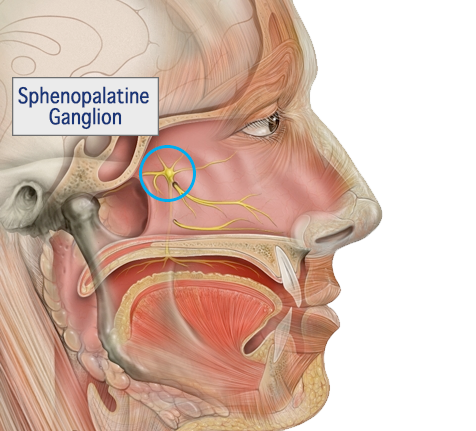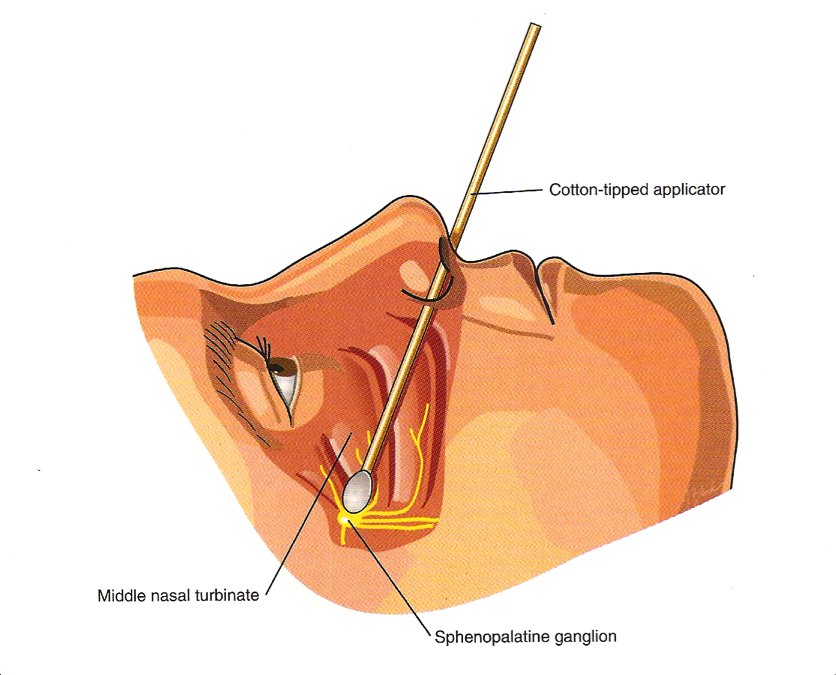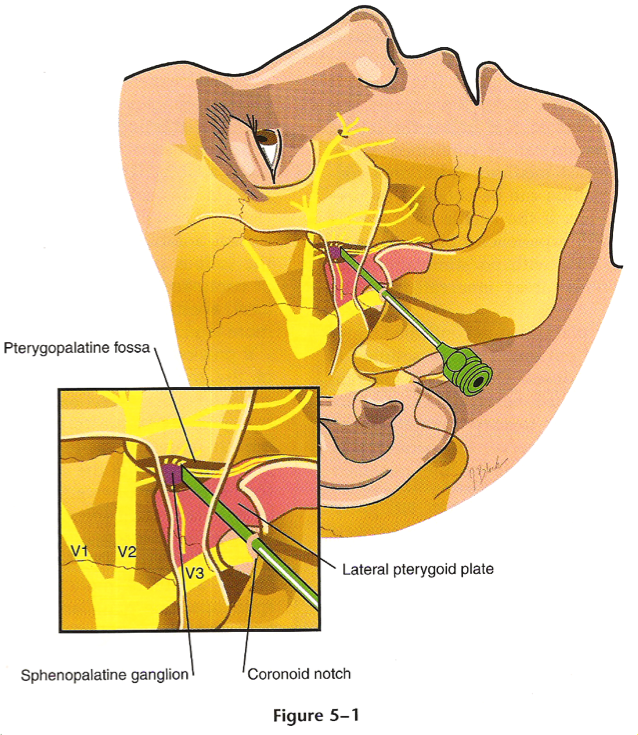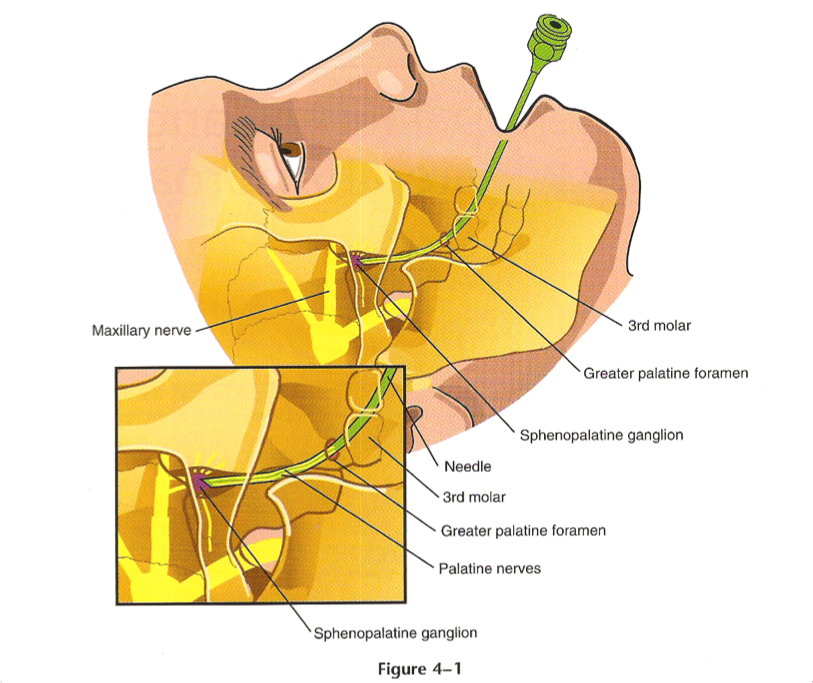Sphenopalatine Ganglion Block for Migraine & Headache Relief
How Sphenopalatine Ganglion block brings about migraine and headache relief:
The sphenopalatine ganglion (SPG) is a nerve bundle located deep in the face, behind the root of the nose. It is part of the autonomic nervous system. For over 100 years, the SPG has been a clinical target to treat severe headaches (Sluder 1908). Since Sluder first described the application of cocaine or alcohol to the SPG, the SPG has been a site for the treatment of severe headache pain, mainly applying lidocaine and other agents to the SPG to achieve a nerve block (Kudrow, Kudrow et al. 1995; Maizels, Scott et al. 1996; Maizels and Geiger 1999).
Recently, acute stimulation of the SPG was tested in patients with migraine (Tepper, Rezai et al. 2009) and cluster headache (Ansarinia, Rezai 2010). In these studies, acute stimulation of the SPG with good anatomical and physiological placement led to rapid termination of severe headache pain. Here is a overview of older and less successful techniques.
MiRx Protocol: Innovative Sphenopalatine Ganglion Block Technique
FDA Cleared TX360®
MiRx Protocol utilizes the latest FDA cleared technology, available today to efficiently and effectively target the SPG nerve.
The Sphenopalatine ganglion nerve block has been made incredibly easy to perform, with the assistance of the Tx360®. This procedure works quickly and doesn't hurt. Not to mention it is safe and cost effective. Most importantly, the results are immediate. The Tx360® has increased the effectiveness of the sphenopalatine ganglion nerve block and dramatically increased the duration of migraine and headache relief.

Older techniques
The headache relief associated with older procedures is often good but short-lived. The significant limitation is the need for repeat procedures because of poor accuracy when accessing the SPG. Accordingly, researchers have been focused on developing SPG therapies that don't require repeat procedures and allow easy and efficient access of the SPG. The Tx360® and the MiRx Protcol is the innovation that provides easy and efficient access of the SPG.
Transnasal Technique:

This technique attempts to drip local anesthetic down the Q-tip to access the SPG. The process takes 25 - 45 minutes and has a low success rate due to the in accuracy of the application.
Lateral Approach:
T his techniqe attempted to access the SPG with a needle through the jaw joint. This technique is very painful and moderately dangerous. The success was much better but was still inaccurate and inefficent due to cost.
his techniqe attempted to access the SPG with a needle through the jaw joint. This technique is very painful and moderately dangerous. The success was much better but was still inaccurate and inefficent due to cost.
Greater Palantine Forman Technique: 
This technique attempts to access the SPG through the top of the mouth. This technique is very dangerous and painful.
The innovation in technology of the MiRx Protocol allows our doctors to access the SPG with great accuracy and low risk. The FDA cleared Tx360® is painless and has been specially designed for comfort. Contact a MiRx Provider to find out if you're a candidate.



